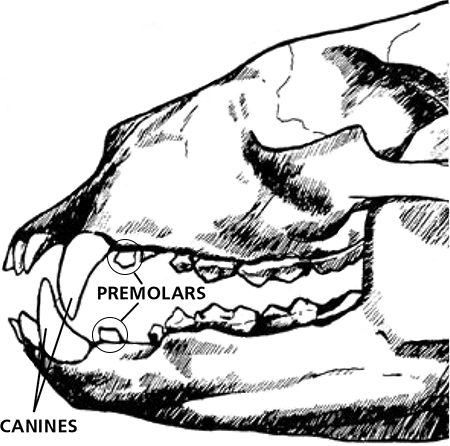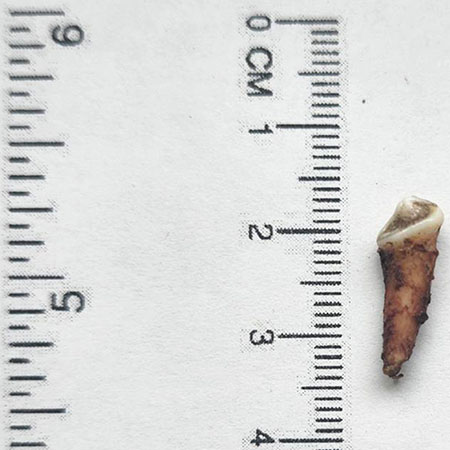Black bear

Black bear seasons
Notes:
- Only bows and muzzle-loading guns are permitted in WMU 7A.
- Indicates bear hunting is only permitted in the geographic townships of Keppel and Sarawak in WMU 82A, the geographic township of Amabel in WMU 84.
- The shooting of cubs or female bears accompanied by a cub is not permitted during the spring season.
Black bear hunting requirements
Anyone wishing to hunt black bear must have the following:
- Outdoors Card
- black bear licence listed on your licence summary
- black bear tag, or be party hunting with a person who has a valid bear tag
- proof of firearm accreditation (if you are hunting with a gun)
In addition, non-residents are also required to have a black bear hunting validation certificate.
Note: A licensed trapper is permitted to hunt black bear under the authority of the trapping licence and in the area designated on the licence.
Black bear hunting regulations
Tagging and transporting
Go to the tags section for details on tagging and transporting. Black bear licences and tags are valid for both the spring and fall season.
Mandatory hunter reporting
Go to the mandatory hunter reporting section for details on timelines and how to submit your report. Resident hunters should note that the reporting requirements have changed.
Firearms
Big game, including black bears, may only be hunted with a firearm (includes bows). If you are hunting deer or moose at the same time that you are hunting black bears, you must only use or carry (on your person, in a vehicle or boat) a firearm of the type permitted for deer or moose, as the case may be, at that time in that WMU. Specifications on the firearms, ammunition, arrows and broadheads that are permitted when hunting black bear can be found in the general regulations section.
Party hunting for black bears
Party hunting is permitted during the bear season under a set of specific conditions. The list of conditions are listed in the general regulations.
Bait placement
During the spring and fall black bear seasons, bait may not be placed for the purpose of bear hunting within:
- 500 metres of a dwelling, unless written permission is obtained from the owner of the dwelling
- 500 metres of a public building
- 30 metres of a right of way for public vehicular traffic or a sign posted/marked recreational trail that is established and maintained by an organization for the general public
Export and shipping
Go to the general regulations section for information on import, export and shipping.
In some instances, both a Convention on International Trade in Endangered Species of Wild Fauna and Flora (CITES) and a provincial export permit are required. A resident or non-resident black bear hunter wishing to export a black bear out of Canada must contact Environment and Climate Change Canada to arrange to obtain a Canadian CITES export permit. It is recommended to apply well in advance of the trip and apply for permits for all CITES-listed species that you may harvest. Please allow up to 21 days to obtain a permit.
A Canadian CITES export permit is required for taxidermy mounts, black bear organs and other parts (for example, baculum). Note: It is illegal to be in possession of a black bear gallbladder.
A CITES export permit is not required for the United States or Canadian resident black bear hunters transporting their black bear hunting trophy consisting of the hide, hide with paws and claws attached, skull and/or meat in a fresh, frozen or salted condition back to the United States or through the United States en route to another part of Canada at the conclusion of their hunt. The hunter must accompany the black bear in these cases.
In some countries and provinces, importation of black bears is regulated; requirements for importation should be determined by the exporter prior to shipment.
Second black bear tags
WMU-specific black bear second tags may be available to resident bear hunters in WMUs where population levels permit. The second tag allows you to harvest a second black bear in the WMU specified on the tag. A second tag purchased in the spring can be used in either the spring or fall season. A black bear licence is required before a second tag can be purchased. A second tag can be used before the tag received with the licence is filled. These tags are available through the Fish and Wildlife Licensing Service. Second tags are available April 15 — visit hunting notices and updates or a participating ServiceOntario at that time for information on WMUs where second tags are available.
Non-resident hunting regulations
All non-residents are required to hunt through an operator licensed to provide black bear hunting services (for example, guiding and baiting services).
To hunt a black bear in Ontario non-residents must have:
- an Outdoors Card
- a non-resident black bear licence
- a bear tag and a black bear hunting validation certificate
The non-resident black bear licence is valid in both the spring and fall seasons.
A black bear hunting validation certificate must be obtained from the licensed bear operator who has been contracted to provide black bear hunting services to the non-resident client.
A non-resident hunter must hunt only in the areas designated on the black bear hunting validation certificate issued by the operator. These areas can include Crown or private land located within a Bear Management Area (BMA) and private land located within a WMU listed on the operator’s licence. The operator’s licence does not permit the operator to provide bear hunting services on private land located within a BMA licensed to another operator. The operator must have the landowner’s permission in order to provide black bear hunting services to clients on private land.
Other regulations
It is illegal to:
- possess a bear gallbladder that has been separated from the carcass
- let spoil or abandon the flesh of any harvested game wildlife, including black bear, that is suitable for food
- hunt black bears within 400 metres of a waste disposal site, regardless of whether the land is Crown or private
- shoot or interfere with black bears in their dens, or damage or destroy their dens
Note: Anyone wanting to provide black bear hunting services (for example, guiding or baiting) to resident hunters in a Bear Management Area (BMA) must possess a licence to provide black bear hunting services that allows them to provide services within the BMA.
Black bear population surveys
Barbed Wire Hair Trap (BWHT) survey stations may be established in several WMUs and monitored weekly from mid-May to the end of June. If you encounter a survey station, for your safety and the integrity of the data please do not disturb the station.
Voluntary black bear tooth submission
All successful black bear hunters are encouraged to submit two premolar teeth from each black bear harvested to assist in determining the age structure and genetic analysis of local bear populations.
If you would like to receive an Ontario Bear Hunter Crest as a thank you, please include your Outdoors Card number.
Please include the following information:
- sex of harvested bear
- WMU within which the bear was harvested
- date the bear was harvested
- Outdoors Card number
Resident black bear hunters can submit teeth along with required information in the mail to:
Big Game Harvest Assessment Program
Natural Resources Information Section
Ministry of Natural Resources
1350 High Falls Road
Bracebridge, ON, P1L 0L1
Non-residents can submit teeth to their operator, who will submit the teeth on your behalf.
Information derived from hunters’ reports and hunter-submitted teeth contributes to assessments of the sustainability of black bear harvests and helps our scientists to address various questions about black bear ecology and management. Specifically, we use the hunterreported sex and age estimated from the teeth to calculate the percentages of females, and of adult females, in the harvest. This information is used to help us better manage Ontario’s black bear population.
Personal information is collected under the authority of the Fish and Wildlife Conservation Act, 1997, and will be used to fulfill your request for an Ontario Bear Hunter Crest. The crest will be mailed to the existing address on file (collected when the bear licence was purchased).
Questions about the collection and use of this personal information should be directed to the Natural Resources Information and Support Centre at
How to extract teeth
The first premolar is a small, single-rooted peg-like tooth located just behind the canines. Premolar teeth are most easily extracted shortly after the animal has been killed while the jaw is still pliable. Care should be taken when extracting the tooth to ensure that the root is not broken. To remove the tooth, push the blade of a knife down along all sides of the tooth between it and the gum. Gently loosen the tooth by rocking it back and forth using the canine for leverage, then carefully remove the tooth using pliers. Avoid cleaning teeth by scraping or boiling as it limits the ability to obtain the necessary data.
A small amount of flesh attached to the tooth assists in genetic analysis of bear populations. The amount of flesh should not exceed the size of the tooth. The tooth should be allowed to dry before packaging.
Aging premolars
To age a tooth, a thin section is taken from the root of each tooth. The section is then stained to make it easy to see the rings of the tooth. Just like rings in a tree, the rings visible on the root of the tooth can be counted to indicate the age of the bear.

